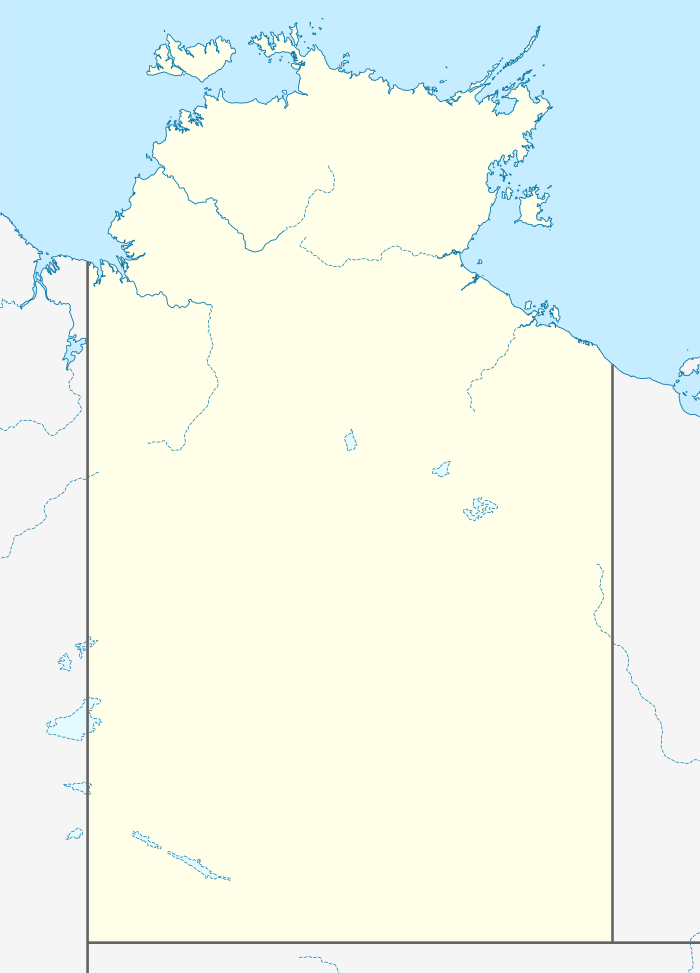Kintore, Northern Territory
| Kintore Walungurru Northern Territory | |
|---|---|
 Kintore Walungurru | |
| Coordinates | 23°16′35″S 129°23′25″E / 23.27639°S 129.39028°ECoordinates: 23°16′35″S 129°23′25″E / 23.27639°S 129.39028°E |
| Population | 454 (2011 census)[1] |
| Postcode(s) | 0872 |
| Time zone | ACST (UTC+9:30) |
| Location | 521 km (324 mi) from Alice Springs, Northern Territory |
| LGA(s) | MacDonnell Shire |
| Territory electorate(s) | Namatjira |
| Federal Division(s) | Lingiari |
Kintore (Pintupi: Walungurru) is a remote settlement in the Northern Territory of Australia about 530 km west of Alice Springs and close to the border with Western Australia. At the 2011 census, Kintore had a population of 454, of which 413 (91 per cent) identified themselves as Aboriginal.[1]
It was founded in 1981, when many Pintupi people who lived in the community of Papunya (about 240 km from Alice Springs) became unhappy with their circumstances in what they saw as foreign country, and decided to move back to their own country, from which they had been forcibly removed decades earlier due to weapons testing from Woomera in South Australia.
Kintore is overseen by the Western MacDonnell Shire, which is based in Alice Springs. The community also has a NT Government funded primary school, an independent store trading as Puli Kutjarra (meaning Two Rocks/mountains in Pintupi language), an airstrip, an independent health clinic called Pintupi Homelands Health Service, a women's centre called Ngintaka Women's Centre, haemodialysis at The Purple House run by Western Desert Dialysis,[2] a high school run by Yirara College,[3] and an arts centre run by Papunya Tula Artists Pty. Ltd. The town is in the territory electorate of Namatjira and the federal electorate of Lingiari.
Kintore is a major centre for the Western Desert art movement which began at the community of Papunya. These people traditionally passed on significant Dreamtime stories by way of art using sand, rock and local plants. Nowadays such paintings are done on canvas and have gained worldwide popularity. A number of members of the famous Aboriginal art company Papunya Tula live at Kintore.
In Pintupi, the majority language of the community, Kintore is known as Walungurru (pronounced: [ˈwɐɭʊŋʊɾʊ]).
Kintore is mentioned in the Midnight Oil song "Beds are Burning" (from the Diesel and Dust album): "Four wheels scare the cockatoos/From Kintore east to Yuendumu".
The local Australian rules football team is the Walungurru Hawks. Yellow and brown paint, also the colours of Hawthorn AFL team, feature heavily on houses and businesses in the community.
Notes and references
- 1 2 Australian Bureau of Statistics (31 October 2012). "Kintore (SSC) (State Suburb)". 2011 Census QuickStats. Retrieved 28 August 2012.
- ↑ "Western Desert Dialysis". Western Desert Dialysis. Retrieved 2016-08-12.
- ↑ "Yirara College of the Finke River Mission Inc.". Retrieved 13 February 2015.